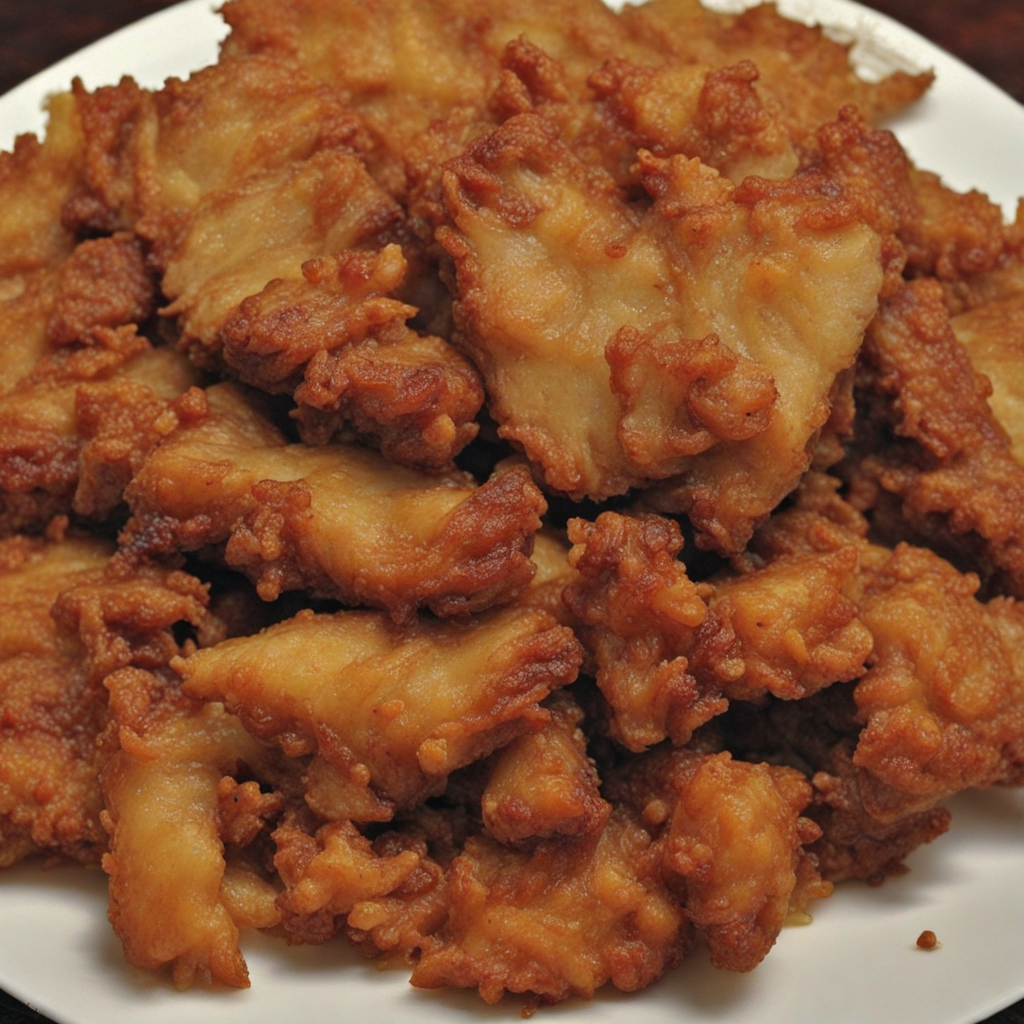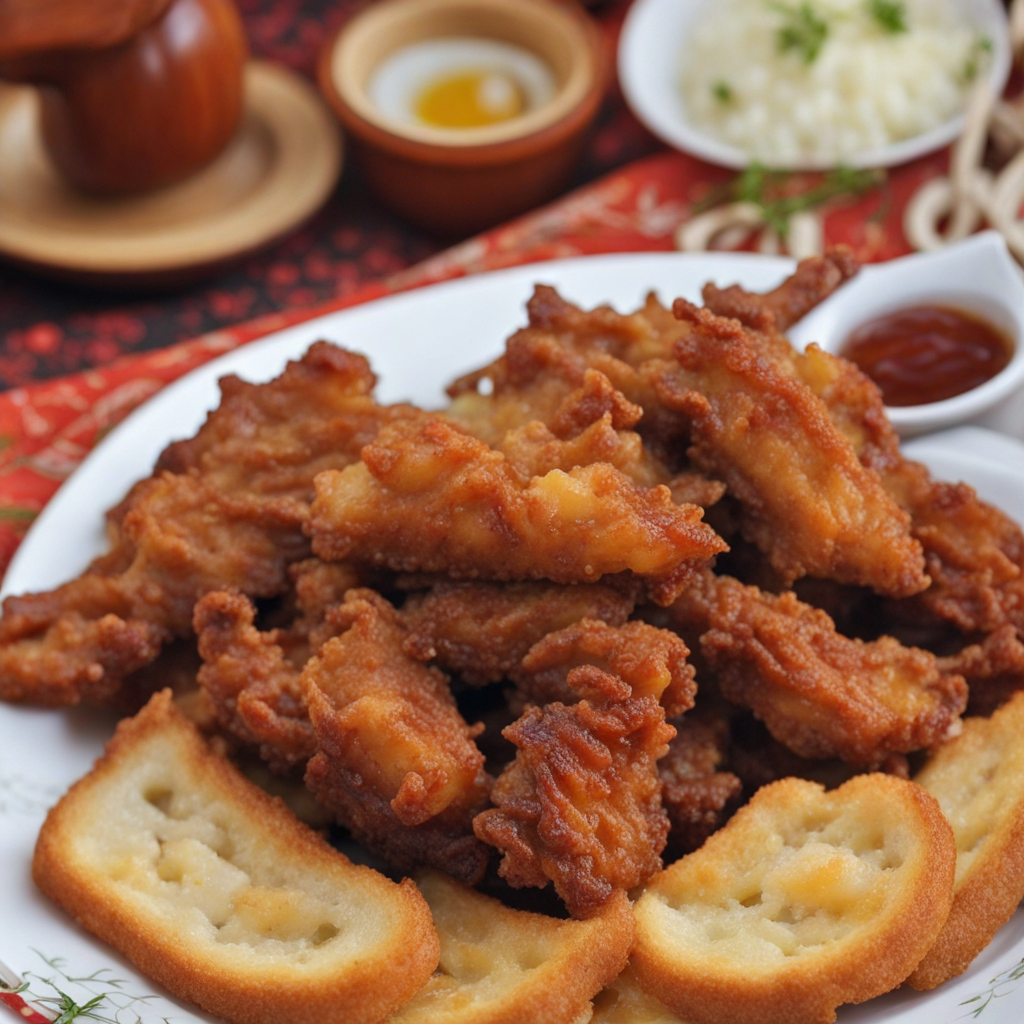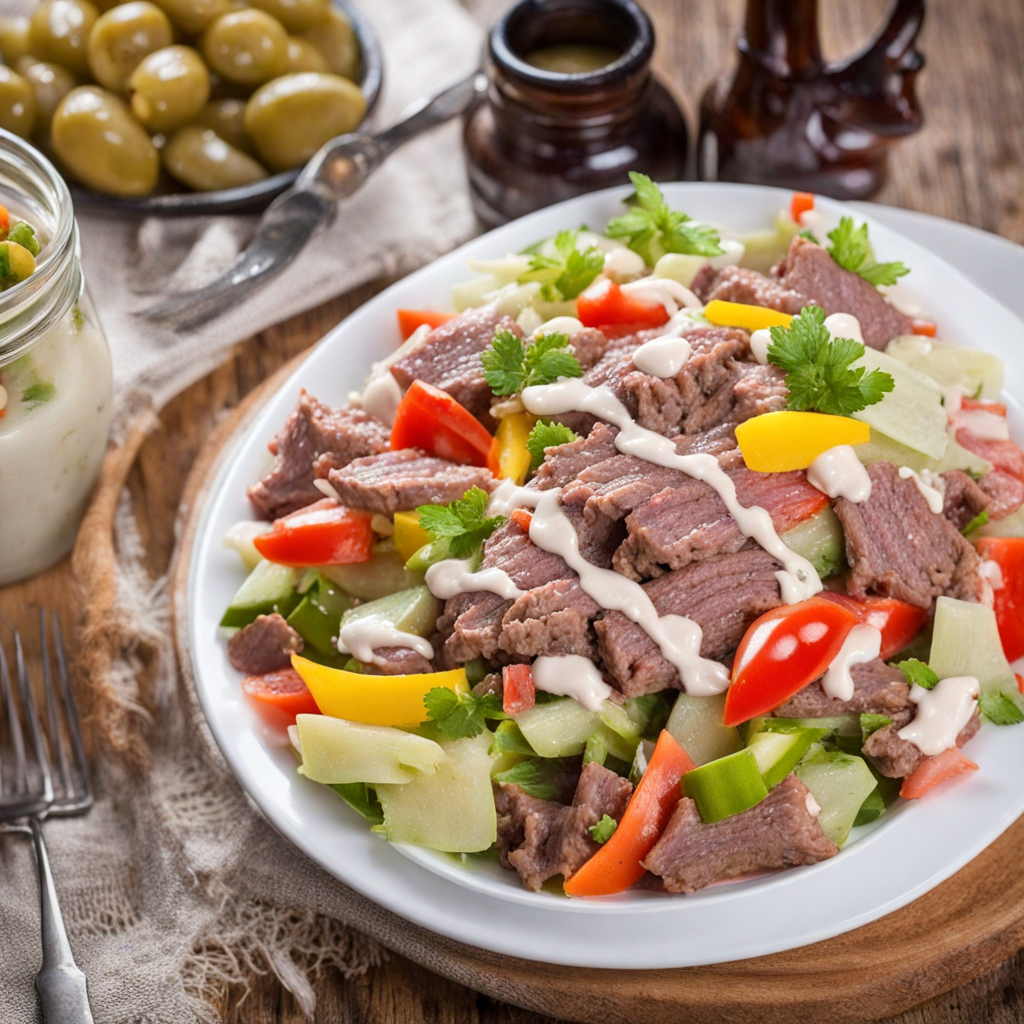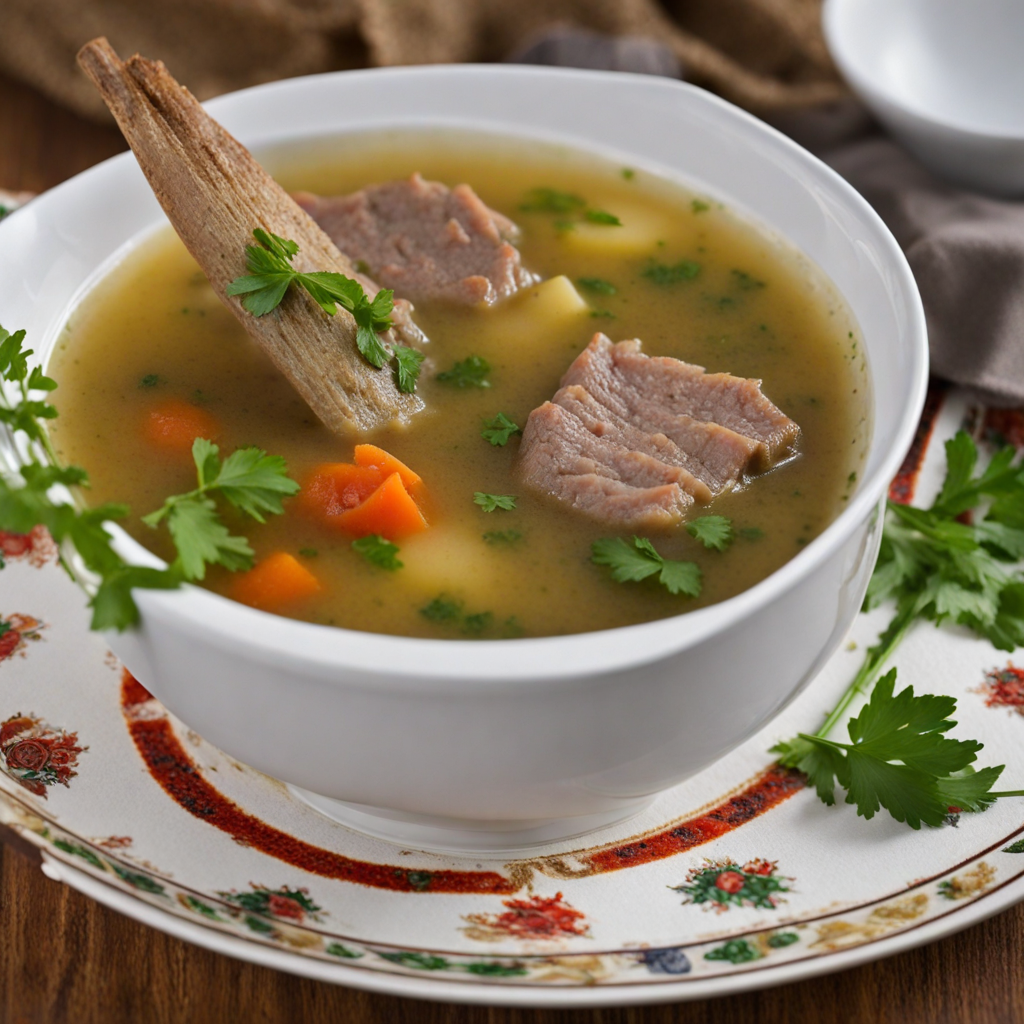Jumări
Jumări are a traditional Romanian delicacy that embody the rich culinary heritage of the region. These delectable bites are made primarily from pork, specifically the fatty parts, which are slowly rendered down to create crispy, golden pieces. The process involves simmering the pork until the fat melts away, leaving behind crunchy morsels that are both savory and satisfying. The texture of jumări is a delightful contrast between the brittle exterior and the tender, succulent meat, making every bite a unique experience. Often enjoyed as a snack or appetizer, jumări are typically seasoned with salt and can be sprinkled with spices like pepper or garlic for added flavor. They are commonly served with freshly baked bread, which acts as a perfect vehicle to complement the rich taste of the pork. Many Romanians also pair jumări with pickles or fresh vegetables, creating a balanced meal that highlights the dish's savory notes while providing a refreshing contrast. The simplicity of the ingredients allows the natural flavors to shine, making jumări a beloved choice during festive occasions and family gatherings. Jumări can also be used as a versatile ingredient, adding depth to various dishes. They can be incorporated into salads, sprinkled over polenta, or even used as a topping for hearty soups. The versatility of jumări makes them a cherished component of Romanian cuisine, allowing food lovers to explore their rich taste in numerous culinary contexts. Whether enjoyed on their own or as part of a larger meal, jumări offer a delicious glimpse into the traditional flavors of Romania, inviting anyone to indulge in their mouthwatering allure.
How It Became This Dish
The History of Jumări: A Romanian Culinary Tradition Jumări, a traditional Romanian dish made of crispy pork cracklings, embodies the rich culinary heritage of Romania. This cherished delicacy not only serves as a flavorful snack but also encapsulates the cultural practices, historical significance, and communal ties of the Romanian people. To understand Jumări's place in Romanian cuisine, we must explore its origins, cultural significance, and evolution through time. #### Origins of Jumări The roots of Jumări can be traced back to the rural communities of Romania, where traditional farming and animal husbandry were integral to survival. Pork, particularly from the pig, has been a staple in Romanian diets for centuries, partly due to the country's climate and agrarian lifestyle. The pig, often seen as a symbol of prosperity and abundance, was commonly raised in households. Every autumn, after the harvest, families would partake in the age-old practice of "tăierea porcului" (the pig slaughter), a communal event that not only provided meat for the family but also fostered community spirit. Jumări emerged from the necessity to utilize every part of the pig, minimizing waste and maximizing flavor. During the butchering process, the fatty parts of the pig were rendered down to create these crispy cracklings. The term "jumări" itself is derived from the Romanian verb "a juma," which means "to peel" or "to strip," referring to the process of rendering fat from the pork skin. #### Cultural Significance Jumări hold a special place in Romanian culture, particularly associated with festive occasions and family gatherings. They are often served during winter holidays, especially around Christmas and New Year's, when families come together to celebrate. The preparation of Jumări is a ritual that transcends mere cooking; it is a moment of bonding, storytelling, and passing down traditions from one generation to the next. In many regions of Romania, Jumări are accompanied by homemade bread, pickles, or even polenta. The combination of textures—crispy, crunchy, and sometimes chewy—creates a satisfying eating experience that tantalizes the palate. Traditionally, Jumări were also served as part of the "meze" spread, a variety of small dishes meant to be shared and enjoyed communally. Moreover, Jumări are often associated with the spirit of hospitality in Romanian culture. Offering a plate of Jumări to guests signifies warmth and welcome, embodying the traditional value placed on generosity and communal sharing. This dish is not just food; it is a symbol of cultural identity, community, and the rhythms of rural life. #### Development Over Time As Romania evolved through the centuries, so did Jumări. The dish has been influenced by various historical events, including the Ottoman Empire's presence in the region and the subsequent Austro-Hungarian rule. Each influence brought new culinary styles and techniques that enriched Romanian cuisine while preserving its core elements. In modern times, Jumări have transcended their rural roots and found their way into urban cuisine. With the advent of industrialization and globalization, the way Jumări are prepared and consumed has changed. While traditional methods still prevail, contemporary twists have emerged, such as the introduction of spices, herbs, and innovative cooking techniques that appeal to younger generations and urban dwellers. The rise of food culture in Romania has also seen Jumări being reimagined in gourmet settings, where chefs experiment with presentation and flavor profiles. Despite these innovations, the essence of Jumări remains intact, symbolizing the connection to the past while adapting to present tastes. The dish has also gained international recognition, often featured in Romanian restaurants abroad. This globalization of Jumări reflects the diaspora of Romanian communities, where food acts as a bridge connecting the past and present, home and abroad. The dish serves as a culinary ambassador, introducing the world to the flavors of Romania while maintaining its cultural significance. #### Making Jumări Today The preparation of Jumări remains a labor of love. Traditionally, the pork belly or fatty pieces of meat are cut into small cubes, seasoned, and then slowly cooked in their own fat until golden brown and crispy. The process requires patience and careful attention, as achieving the perfect texture is key to the dish's appeal. In contemporary kitchens, while some still adhere strictly to traditional recipes, others have begun to explore new dimensions, incorporating different types of meat or experimenting with flavorings such as garlic, paprika, and various herbs. This evolution reflects the dynamic nature of food traditions, where heritage meets innovation. Jumări are often enjoyed as a snack, a side dish, or even incorporated into other recipes, showcasing their versatility. They can be found in sandwiches, served atop salads, or even as a crunchy topping for soups, demonstrating their ability to adapt and thrive in various culinary contexts. #### Conclusion Jumări is more than just a dish; it is a testament to the resilience and creativity of Romanian culture. From its humble origins rooted in rural traditions to its modern-day adaptations, Jumări encapsulate the essence of community, celebration, and the enduring connection to one’s heritage. As Romania continues to embrace its culinary legacy while navigating a rapidly changing world, Jumări stands as a delicious reminder of the past—a dish that not only satisfies the appetite but also nourishes the soul. In every crispy bite, one can taste the history, culture, and love that have been passed down through generations, ensuring that Jumări will remain a beloved part of Romanian cuisine for years to come.
You may like
Discover local flavors from Romania







